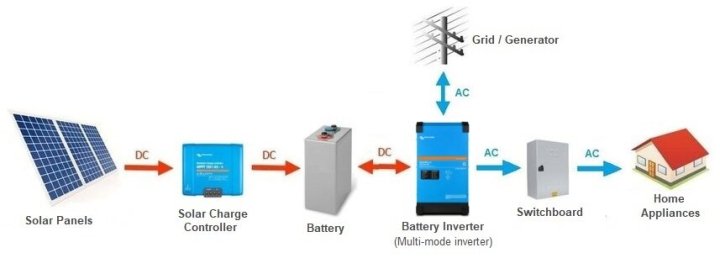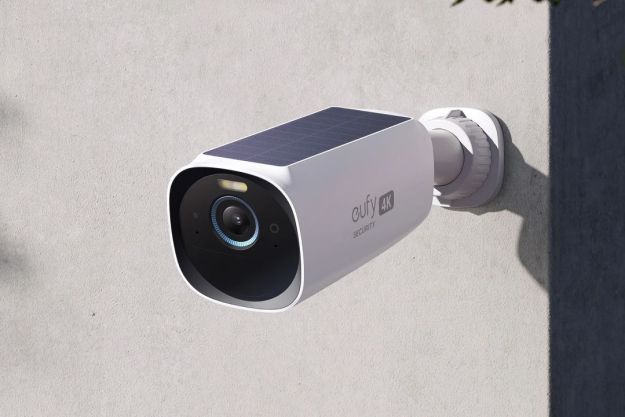There are two main types of electrical current that flow through your home: Alternating and direct. The vast majority of devices around you are powered by alternating current.
By allowing electrons to ebb and flow through your home’s wires, it’s possible to quickly meet shifting electrical demands. However, once upon a time, direct current was the standard, and it wasn’t until the conclusion of a decade-long feud between Nikola Tesla and Thomas Edison that the world settled on AC.
How does direct current work?
Direct current is fairly straightforward. DC power strictly flows in one direction. That means the electrons get pushed in from the power generator, and keep going forward through the wire until it gets to your device, does its work, then continues through the outlet to complete its circuit.
DC power is typically generated by spinning a wire coil within a magnet. There’s loss of efficiency here due to sparks and heat caused by the friction of certain moving parts. The current of the DC power generated is tied to how quickly that motor is turning, and is kept consistent. Appliances have to be operating at the same current to avoid being overloaded or underpowered. When DC power was a part of the grid, this resulted in multiple overlapping electrical providers each generating certain voltages, compatible only with appropriately-rated appliances. It was a mess.
How does alternating current work?

Alternating current has electrons moving forward and backwards through a wire. This is caused by a change in how power is generated. AC power is typically generated by spinning a magnet inside a wire coil. As the magnet spins, its poles take turns alternately pushing and pulling the electrons in the surrounding coil.
While direct current would look like a single straight line when measuring current over time, alternating current looks more like a sine wave: Climbing, reaching a peak, then dropping and eventually backtracking. The benefit here is that the intervals between peaks and valleys can be shortened or lengthened in order to change the final current and meet demands. This made transmission of power more flexible than DC, since devices of varying voltages could all benefit. Power was lost whenever AC power needed to be converted to DC back at home, however.
Where is direct current most useful?
If AC is so great, why bother with DC at all? Even though most of our home devices have erratic enough power demands for AC to be useful, there are a few applications where direct current is more efficient. The big one is charging batteries. Batteries typically have a single high voltage at which they charge and discharge. (Yes, some of the fancier batteries out there have microcontrollers to tweak that, usually used with vaping pens.) When you charge standard AA or AAA batteries, the charger is converting the AC voltage from your wall to DC.

As mentioned, there’s a loss of efficiency in these conversions, but if you were able to get power from a direct current source, you would be able to enjoy enhanced electrical efficiency. Solar panels are a fine example. Solar power generates DC, and there is a loss of efficiency in converting that to AC for immediate use. However, pumping DC solar power into a battery maximizes the amount of electricity the can be captured. A solar charge controller in between the two ensures the most efficient transfer given solar’s variable output.
Unfortunately, that battery power will still need to be converted to AC at some point in order to play nice with most of the appliances around the house. Some appliances that have a singular, steady energy draw can reliably tap directly into DC power. Direct current freezers and fridges in particular are popular in off-grid homes since they can avoid a loss of efficiency in the conversion to AC. Some enterprising folks have even been able to design a DC-powered home. Beyond consumer applications, you’ll also see high voltage direct current lines feeding into transformers where they’re converted into AC before going to residential areas.
In the end, direct current gets you closer to the power source with higher efficiency than alternating current, but since our electrical demands tend to change, AC gives us the flexibility we need to switch gears quickly.
Editors' Recommendations
- The Anker Solix F3800 power station is one of the most powerful on display at CES 2024
- Anker reveals Solix C1000 and Solix F3800 portable power stations
- Dyson is gearing up to launch the most powerful robot vacuum in the world
- How smart water management can protect against damage and save money
- This is how much it costs to run a smart garden, and how much it can save




